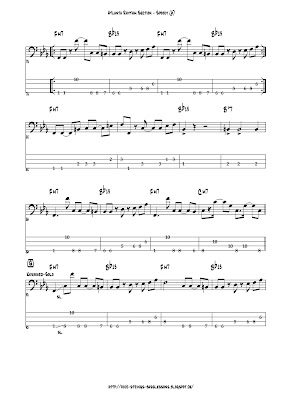Absolute Beginners Workshop : E-Bass
Als Anfänger hat man so viele Fragen und es ist meist
schwierig kompetente Antworten zu finden. Im Internet findet man oft
widersprüchliche Aussagen und manches versteht man auch überhaupt nicht.
Wenn du dir auch Fragen stellst wie..
…ist meine
Greifhaltung richtig?, warum tut mir die Hand weh?, wie kann ich den kleinen
Finger trainieren?, wie finde ich den richtigen Fingersatz?, muss ich
Wechselschlag spielen?, was ist „thumb trailing“?, mit Fingern oder Pick
spielen?, übe ich richtig und vor allen Dingen auch effektiv?, ist es sinnvoll beim
Spielen mitzuzählen?, was muss ich über Musiktheorie wissen?, Noten oder Tabs?,
wo finde ich gutes Übematerial usw. usw. usw….
dann bist du genau richtig bei meinem „Absolute Beginners“
Workshop. Ich möchte an diesem Wochenendworkshop all eure Fragen beantworten,
euch wertvolle Tipps und Lösungsvorschläge für eure Probleme geben.
Bringt einfach eure Fragen, Problemfälle etc. mit und wir gehen gemeinsam alles durch. Ich gebe Euch Feedback über eure Stärken und Schwächen und werde am Ende jedem von Euch ein individuelles Übeprogramm mit auf den Weg geben.
Bringt einfach eure Fragen, Problemfälle etc. mit und wir gehen gemeinsam alles durch. Ich gebe Euch Feedback über eure Stärken und Schwächen und werde am Ende jedem von Euch ein individuelles Übeprogramm mit auf den Weg geben.
Sa. d. 18.04.2015 von 14h
– 18h
und So. d. 19.04.2015 von 11h – 15h
und So. d. 19.04.2015 von 11h – 15h
Ort: STAGE AHEAD Musicschool, Bismarckring 3, 65183
Wiesbaden
Maximaler
Teilnehmerzahl: 8
Anmeldung ab sofort an info@stage-ahead.de oder telefonisch unter 0611 – 30 86 196

.jpg)








%2BThe%2BReaper%2B-%2B1.TIF)
%2BThe%2BReaper%2B-%2B2.TIF)
%2BThe%2BReaper%2B-%2B3.TIF)
%2BThe%2BReaper%2B-%2B4.TIF)
%2BThe%2BReaper%2B-%2B5.TIF)
%2BThe%2BReaper%2B-%2B6.TIF)
















